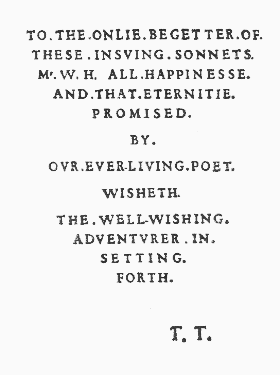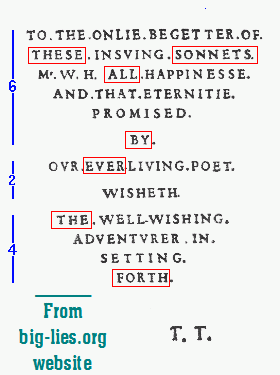
1. The Dedication to the Sonnets, 1609.
John Rollett on the Sonnets.
John Rollett spoke, at the AGM of the de Vere Society in January 1998 in London, on ciphers in the dedication to the sonnets. He emphasised that the dedication is usually printed wrongly, something verifiable by looking at modern books: onlie, happinesse, the punctuation, and the layout itself, are usually very unlike the original. Rollett seemed to imply this careless practice was begun when Malone in the 19th century misprinted it. For the decoder of ciphers, the original layout may be crucially important ...

 HTML Rae West First Uploaded 98-03-19 This revn 99-01-13.
HTML Rae West First Uploaded 98-03-19 This revn 99-01-13.